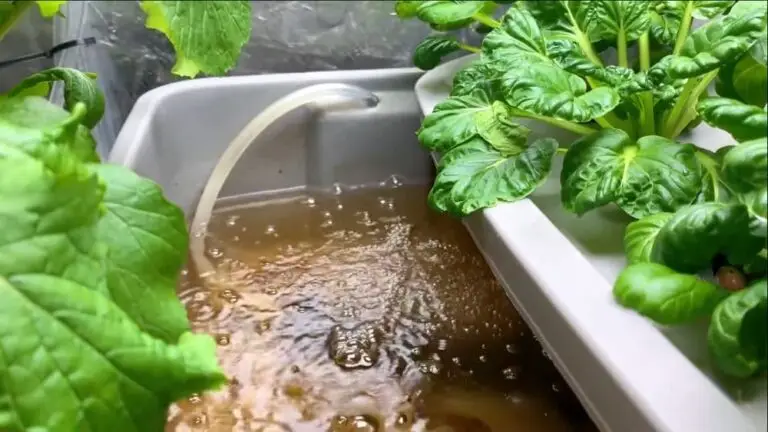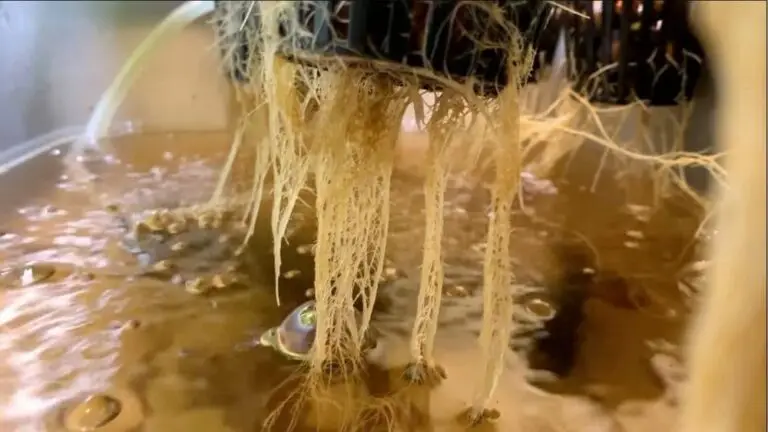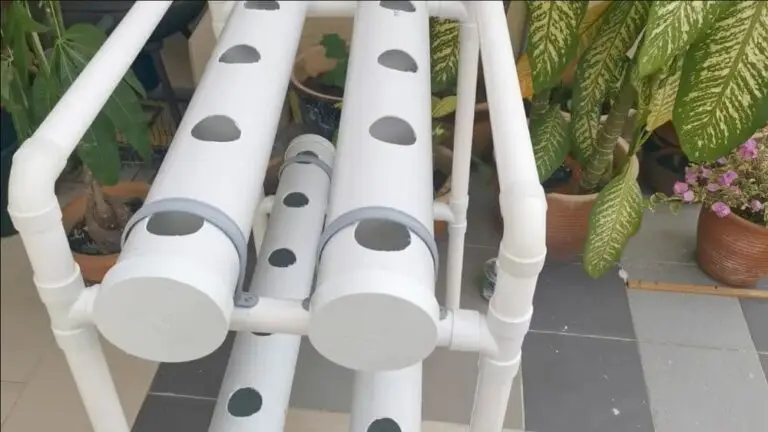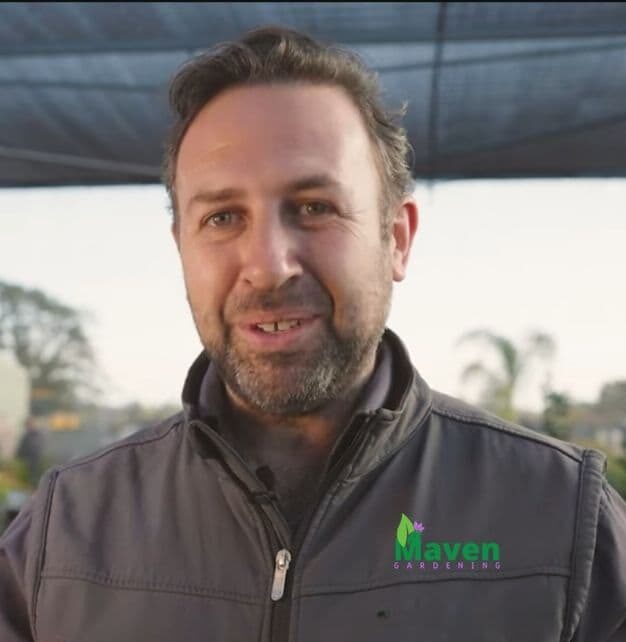A Beginner’s Guide to Hydroponic Gardening: Get Growing!
Hydroponics is quick, easy, and fun for growing plants. The same applies to beginners with limited space, poor soil, or no gardening experience. This guide will take the mystery out of hydroponics for beginners and give them the tools.
Join me on this green journey as I explain everything I know about this sustainable method and how it can change your growing game.
Hydroponics Basics for Beginners.
What is Hydroponics?
Hydroponics uses mineral nutrient solutions in water to grow plants without dirt. Using this method is better than traditional soil gardening because plants get a balanced diet of nutrients straight through their roots.
But what’s the difference between soilless farming and backyard gardening? The main difference is the medium and how nutrients are delivered.
A Quick History
Growing plants in water isn’t a novelty. In the beginning, there were the Hanging Gardens of Babylon and the Floating Gardens of the Aztecs. However, hydroponics was scientifically described in the 20th century and is now used in modern farming. It is an excellent tool for gardeners of all levels, old and new.
The Science Behind Green
Newbies need to know the basics of hydroponics. This innovative system involves growing plants by giving their roots a balanced nutrient solution in a controlled environment. Direct food helps plants grow faster.
Here are some simple science bits:
Nutrient Solution: Water and minerals.
Oxygenation: Roots need air to breathe. Hydroponic systems give roots lots of oxygen, so plants can grow.
pH balance: Controlling solution acidity or alkalinity is key to nutrients being available for uptake.
Why Hydroponic Gardening?
Hydroponic gardening is more than a fad; it’s an innovative, sustainable option for newbies and experienced gardeners. Here are some benefits:
Faster Growth and Higher Yields
Plants in water grow faster and produce more than soil plants. They get the right amount of water and nutrients without wasting energy looking for food. That energy helps them grow faster and more efficiently.
No Soil is Needed
One of the coolest things about water-based gardening for newbies is that it doesn’t need dirt. So you don’t have to worry about digging, pulling weeds, pests, or diseases that live in the dirt. It’s a clean way to grow indoors.
Less Water Usage
Hydroponics uses water. Closed systems reuse water and nutrients, using less than traditional gardening. It saves resources and makes hydroponics a better long-term option.
Sustainability and Space
Hydroponic systems are suitable for city living with limited space and can be placed vertically in any room in your home. With this technique, you can grow fresh food wherever you live and eat, from small herbs in your kitchen to big indoor setups. They reduce your carbon footprint and make your home more eco-friendly.
Hydroponics Systems for Beginners
Deep Water Culture (DWC):
DWC suspends plant roots in an oxygenated nutrient solution. It’s more complex than wick systems.
Pros:
- Easy to use: excellent for beginners; easy to understand and make mistakes.
- Efficient nutrient uptake: Roots get nutrients directly.
- Rapid growth: More crops can be grown on it, and it grows faster.
Cons:
- It needs to be maintained and monitored.
- It could be more flexible when the power goes out.
Wick System:
One of the easiest ways to grow plants hydroponically is with a wick system. A wick, usually cotton or another absorbent material, moves the nutrient solution from a reservoir to the plants’ roots.
Pros:
- Low maintenance: There are no pumps or moving parts.
- Beginner-friendly: Simple to set up and use.
- A small-scale solution: suitable for small-scale production.
Cons:
- It grows slower than more advanced systems.
- Only certain types of plants can benefit from them because they deliver nutrients slowly.
Ebb and Flow (Flood and Drain)
Tidal Action: By mimicking the tide’s natural flow, this system floods the root zone with a nutrient solution at intervals before draining it away. This action ensures roots get ample nutrients and oxygen.
Pros: It is effective for various plants and allows for an oxygen-rich root environment.
Cons: Requires more setup and fine-tuning, making it more complex for beginners.
Nutrient Film Technique (NFT)
It is a type in which plants are grown by letting a shallow stream of nutrient-rich water flow over their roots. The nutrient solution is moved around the system through tubes or troughs with slopes.
Pros:
- Water-efficient: NFT systems use less water.
- Adaptability: It can be used with different plants.
- Low maintenance: This requires little maintenance compared to others.
Cons:
- It must be watched constantly, especially when there is no power.
- Beginners need to be more careful because they need to control the nutrient flow precisely.
Aeroponics
Mist and Air: Plants hang in the air while a fine mist of a nutrient solution is sprayed directly onto the roots. This high-tech method efficiently uses water and nutrients.
Pros: It enables rapid growth, oxygenates, and efficiently uses resources.
Cons: It is more technically complex and requires consistent monitoring and maintenance.
Remember that every system has pros and cons. Consider your goals, space, and plants’ needs when choosing a hydroponic setup. Starting small is an excellent way to learn and enjoy the process.
Setting Up Your First Hydroponic Garden
How to Get Started
You’re ready to grow plants by setting up your first water garden. Let’s start with a simple plan:
- Choose Your System: Choose a method that fits your needs and preferences based on what you learned in the last chapter.
- Gather Supplies: You’ll need soil or clay pellets for growth, a nutrient solution, a pH test kit, and seeds or plants.
- Assembly: To assemble your system, follow the instructions manual. There are many easy-to-follow water gardening tips online for people who prefer to do things themselves.
Choosing the ideal location
Light: Make sure your setup is in a place with enough natural or artificial light for healthy growth.
Temperature: Most hydroponic systems do well in a stable, warm climate.
Accessibility: Make sure it’s easy to access your system for upkeep and monitoring.
Test and Adjust
Water Quality: Check the pH of your nutrient solution and make changes until it’s in the ideal range for your plants, usually between 5.5 and 6.5.
Nutrient Strength: For young plants, start with a half-strength nutrient solution and slowly increase it as they grow.
It’s Important to Pick the Right Plants
Hydroponic systems are not suitable for all plants. Some plants do well in this setting, while others struggle, so selecting the right plants is essential. For first-timers, it’s wise to start with easy-care-for plants that grow quickly.
Good Plants for Hydroponics Beginners
Lettuce and leafy greens: These plants do very well in hydroponics, especially for beginners, as they don’t need a lot of room or light and grow quickly.
Herbs: Basil, mint, and cilantro are great for your first soilless garden. They are helpful in the kitchen and make your indoor garden smell pleasant.
Strawberry: Strawberry plants are more complex to grow than herbs or lettuce, but they are very profitable. Strawberries grown in hydroponic systems bear fruit all year long.
Select Your Plants
Growth Conditions: Think about the light, temperature, and humidity of the place you want to set up, and then choose plants that do well in those circumstances.
Nutritional Needs: Different plants have different dietary needs. Check if the plants you want to use will grow in your setup.

Nutrients and Water Management
Hydroponic farming gives plant roots the right amount of water and nutrients. Understanding this balance is critical to a successful garden.
The Role of Nutrients
Macro and Micro: Plants need different nutrients, including micronutrients (like iron, manganese, and zinc) and macronutrients (like nitrogen, phosphorus, and potassium).
Pre-mixed Solutions: Many effective pre-mixed nutrient solutions are available on the market. They are easy to use and help plants thrive.
Managing Your Nutrient Solution
Regular Testing: Check your fluid’s pH and EC (electrical conductivity) often with a pH and EC meter.
Adjustments: Based on your tests, you might need to change the pH or add more nutrients to the solution. Make small changes often.
Efficient Water Use
Recirculation: Hydroponics reuses water, cutting waste. Make sure your system can hold nutrition solutions and use them again.
Monitoring: To ensure plant survival, monitor water levels, especially in deep water culture systems.
Hydroponic Garden Care for Beginners.
Now that your system is running, look after your garden every day. While keeping an eye on and fixing things in your yard might sound complex, these simple tips will help it grow quickly.
Routine Checks: The Key to Healthy Growth
Daily Observations: Check your plants daily to see if their color, structure, and health have changed. Early detection can prevent problems from worsening.
pH and EC Levels: Buy a suitable pH and EC meter. Monitoring solution acidity, alkalinity, and nutrient strength is critical for plant health. For most plants, aim for a pH level between 5.5 and 6.5.
Keeping Things Clean
System Cleaning: Clean your system often to stop algae growth and eliminate germs. Everything works better when it is clean.
Root Care: When performing system maintenance, gently check and clean the plant’s roots. Healthy roots should be solid and white, not slimy or brown.
Troubleshooting 101
You have to deal with problems in order to learn. Nutrient shortages, pH imbalances, and pest infestations are all common problems. Keep calm, and use trustworthy sources to determine what’s wrong and how to fix it. Remember that every problem you solve is a chance to improve at planting.

Harvest Your Crops
Gardening is all about harvesting. It is a joy to see something ready to be picked up after your meticulous work. How and when should I pick?
Timing is Everything
Know Your Plants: Each plant has signs that tell you when it’s ready. For example, leafy greens should be picked at the correct size. However, fruits like tomatoes should be picked when they have the right color and hardness.
Continuous Harvest: Many leafy greens can be picked one leaf at a time, making the plant produce continuously. The “cut and come again” method works well for hydroponic newbies.
Harvesting Techniques
Gentle Handling: To prevent injury, be gentle when picking them. Use clean and sharp scissors or knives to make clean cuts.
Post-harvest Care: To keep your food fresh, rinse it with clean water and store it correctly.
Conclusion: Enjoy the Start of Water Gardening
Excellent work! You now know what to do to get your hydroponic garden started. Your journey is just beginning. You will learn the basics and then harvest your crops.
Thanks to this new growing technique, you can grow a wide range of plants all year, no matter what time of year or where you live.
Remember that every plant you produce and every problem you solve in the garden makes you a better and more skilled gardener. Keep trying different things, learning, and, most of all, having fun!

Additional Resources: Learn Eco-Friendly Growing
Here are some helpful information to learn more about environmentally friendly gardening:
Books and eBooks: Start with books that cover hydroponic basics for beginners and provide more in-depth information.
Online Forums and Communities: Sites like Reddit and GardenWeb have active communities where you can ask questions, share your own experiences, and get to know other people interested in hydroponics.
DIY Tutorials and Videos: Websites like YouTube are helpful for visual learners because they have a vast library of DIY videos and guides on how to set up and maintain hydroponic systems.
Local Workshops and Classes: Your area’s community schools, garden centers, and gardening clubs offer hands-on learning opportunities.
With the information in this guide and the many other tools, you should be able to grow a healthy, helpful garden.
FAQs:
How much does it cost to start a hydroponic garden?
Setup costs vary based on size and complexity. Simple setups can be cheaper, but bigger, more advanced systems may cost more.
Can I convert my traditional garden to hydroponics?
Of course! Gardeners switch to hydroponics to avoid soil problems and enjoy growing all year. Take it easy at first to learn the fundamentals before switching.
Is hydroponic gardening organic?
You can do organic hydroponic gardening using natural bug control and nutrient solutions. It’s essential to follow organic rules in your garden.
What are the most beginner-friendly plants for hydroponic gardening?
Lettuce, mint, spinach, and cherry tomatoes are some of the easiest hydroponic plants to grow without help. These plants do well in these systems and usually need less care, making them suitable for people just starting with hydroponics.
Can hydroponic gardening be cost-effective for beginners?
For beginners, this modern gardening can save money, especially if you start small and make your setup. Water and pesticide savings, combined with hydroponic plants’ higher yields and faster growth rates, can cover initial costs.
What are the signs that my plants are not receiving adequate nutrients?
Having yellow or brown leaves, slow growth, falling leaves, and not blooming or fruiting well are all signs that your plant isn’t getting enough nutrients. A lack of nutrients can show up visually in specific ways, so keeping a close eye on plant health is critical.

Meet Milan Cole, your urban gardening pro!
Milan Cole, chief content writer at Maven Gardening and an urban gardening expert, is passionate about helping city dwellers cultivate their green thumbs. Armed with extensive horticultural knowledge, Milan provides practical advice for overcoming urban gardens’ challenges, like limited space, water scarcity, and reduced sunlight.
His expertise extends beyond traditional methods, encompassing innovative approaches like hydroponic and aquaponic systems and sustainable gardening practices. Milan skillfully adapts these techniques to urban environments, considering factors like pollution and climate change.
In his clear and concise writing, Milan offers actionable solutions for anyone wanting to bring life to an urban space. He shares valuable insights into growing herbs in tight spaces, maximizing the potential of window boxes, and transforming even the most miniature balconies into thriving green oases.
Milan’s guidance is straightforward and practical, making it ideal for anyone looking to cultivate their own urban garden, regardless of prior experience.
Join Milan Cole on your journey to metropolitan Eden!



